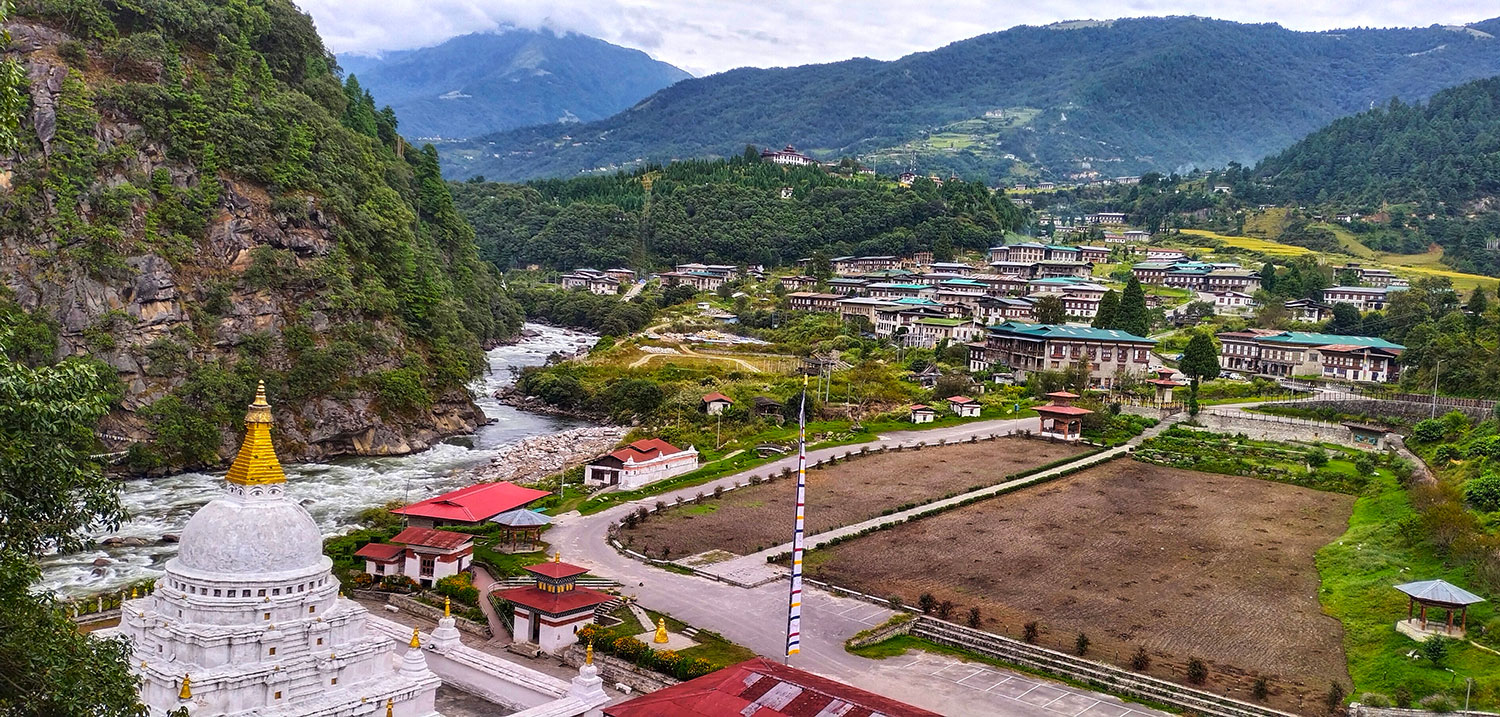…residents say they need action before it is too late
Neten Dorji
Trashiyangtse— Settlements along the banks of two streams in Trashiyangtse live under constant threat of flooding every monsoon without proper flood mitigation measures.
In September, the stream flooded and disturbed water supply in Trashiyangtse town. After heavy rainfall at source on September 14 evening, the swollen stream gushed along the banks depositing mud.
Residents are worried about living in constant fear due to heavy rain leading to a rise in the water level of the stream. They say that in the absence of permanent flood prevention measures, these challenges will forever burden them and tenants.
A resident, Jigme Seldon, said that the frequent flooding in Trashiyangtse town has left the residents worried about the potential floods in the future.
“We continue to live in fear throughout the monsoon season as the stream swells even on a sunny day,” said Jigme Seldon. “Recent floods were stronger than floods that occurred 15 years ago.”
They raise concern over reducing the flood risk in every meeting, but nothing has happened as of now.
Another resident, Chengamo said that a permanent solution is needed to reduce the flood risks in Trashiyangtse town.
“This problem will remain unless a proper action is taken by the dzongkhag. Addressing this issue should be prioritised.”
Most of the Shopkeepers said that the floods remain the biggest challenge in the dzongkhag. They said that there have been no floods caused by the Bayzam stream since the first incident in 2009.
Bimkhar and Bayling residents passed on information about floods to residents in Trashiyangtse. “If we do not get information on time, our lives will lose to floods. A retaining wall was built to protect us, but we can not trust the wall,” said a shopkeeper.”
The moment it begins to pour heavily, residents are on high alert and frequently move out of their homes to check on two streams which flow right through the middle of the town.
“During monsoon, people cannot sleep in peace due to fear of losing life and properties to the flood. It is not only me, many residents along the stream are terrified,” a resident, Pelden Mo said.
Pelden Mo has the stream flowing next to her house. “I haven’t been able to sleep well for the past few days since it was raining. I do not know when the floods will enter the settlement and sweep away houses.”
She said when it rains heavily in high mountains the stream swells and causes flash floods in low areas.
The embankment walls in most of the areas along the river are weak and prone to breakage. Though embankment walls have been constructed to control erosion in some areas, they are not strong enough to hold mega-floods, they say.
A resident, Sonam Wangmo, said that the walls only have one layer of foundation.
“If a mega-flood, like the one that occurred a month ago, occurs again, the embankment is going to give way to floodwaters,” she said, referring to the floods that occurred a few years ago, which damaged walls and killed three students.
She said that the authorities concerned have to take concrete measures to save the settlements near the two streams from floods. “But our dzongkhag is doing nothing,” she said.
The Serkang stream has a history of swelling unpredictably, especially on auspicious days like 15th and 30th day of the Bhutanese calendar. Residents of Choeten Kora town have been living in fear for decades. The residents had to evacuate at midnight whenever the stream swelled.
A civil servant said that the flash floods are becoming more common in Trashiyangtse.
“Flash floods are the biggest threat to residents. With no control over it, the least we can do is to prepare the communities for such a disaster,” he said. “Installation of a siren system near the source of the stream would alert them and save life from natural disasters.”
Residents in Choeten Kora town approached authorities to initiate precautionary measures. They requested a siren system near the source of the stream to alert them about the danger. However, their plea fell on deaf ears.
“We are yet to recover from the incident that happened in Lhuentse, where a swollen stream washed away 23 people. Should we wait for a natural disaster to happen in Yangtse,” a resident questioned.
Dzongkhag Planning Officer, Tshering Dorji, said that dzongkhag has taken several measures to mitigate floods like construction of flood protection walls along vulnerable areas, such as riverbanks dredging in 11th and 12th FYP.
“In collaboration with the Food and Agriculture Organization (FAO) of the United Nations , we conducted studies to assess the potential for future floods and evaluate the associated risks,” said the planning officer. “These studies help us in understanding the patterns and causes of flooding in the region, as well as identifying vulnerable areas and developing strategies to mitigate the risks.”
Two consecutive studies and consultation meetings by the expert from FAO were conducted in Trashiyangtse.
“We submitted a proposal for the installation of a flood alert system along with the protection wall to FAO as a package, to ensure the safety of residents during emergencies.”


